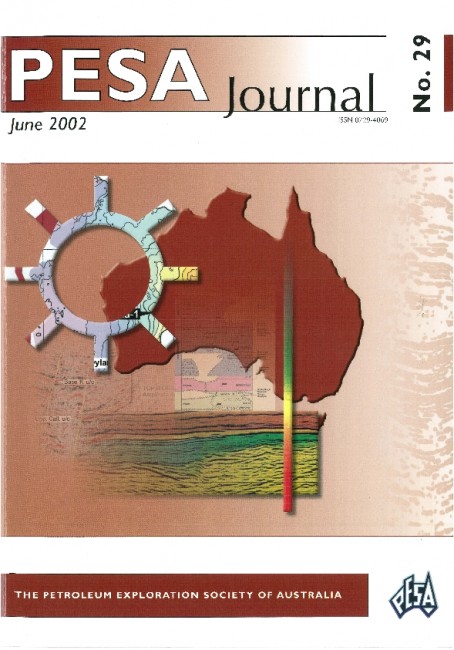Publication Name: PESA Journal No. 29
Authors: G.M. King
Publication Volume: 29
Date Published: June 2002
Number of Pages: 11
Reference Type: Journal Article
Abstract:
The level of exploration and appraisal activity in 2000maintained a level similar to that of the previous year. Drilling
activity offshore increased slightly from 1999, maintaining the
gradual increase from a low in 1991. Onshore drill ing activity
also increased slightly on 1999, but is still markedly down on
expected levels because new permits are not being awarded due
to Native Title issues.
In both onshore and offshore basins, there was a continuing
decline in 2D seismic acquisition, but a continuing increase in
3D acquisition. The gradual increase in drilling activity over the
past ten years is in part attributed to increased density of drilling
in areas that have had 3D seismic coverage.
The offshore activity continues to be focussed in the Carnarvon
Basin, in which 73% of the wells were located, including
perhaps the most significant discovery, Laverda-1, drilled by
Woodside. A campaign of 25 wells by the Apache-led JV
resulted in three potentially commercial discoveries: Corvus-1,
Linda-1 and Tanami-4 (renamed the Simpson field).
Overall success rates have been high, but this is not translating
to commercial reserve additions because of the number of subeconomic
oil accumulations and a predominance of gas rather
than oil.
Onshore, a further round of acreage was released in the
Cooper/Eromanga Basin, and a surge of activity is expected over
the next two to three years. However, award of blocks is being
held up by delays in approvals related to Native Title, which is a
major issue for the onshore industry.
The new Environment Protection and Biodiversity Conservation
(EPBC) Act has created significant uncertainty in the industry,
with respect to how it is being implemented. It has already led
to significant delays in operations and therefore execution of
committed work programs.


